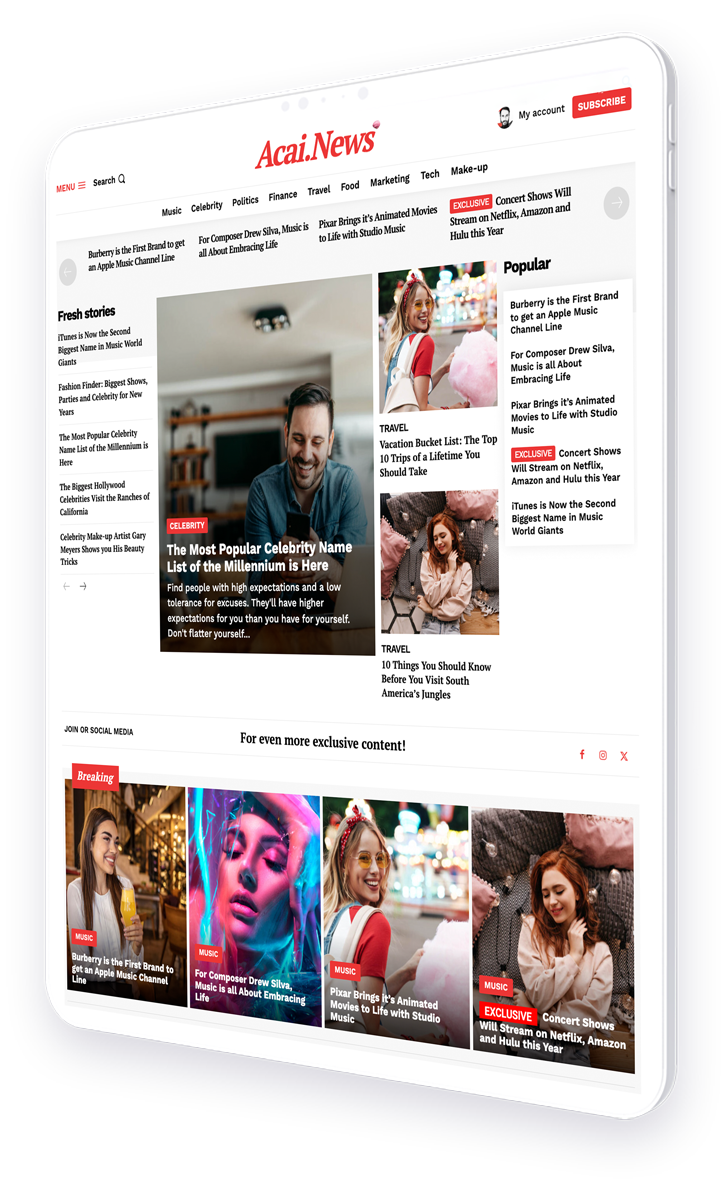How AI can analyze user behavior and adjust call-to-action placements for better conversion rates
In the digital age, corporate magazines are no longer just about delivering content; they are about engaging readers and driving actions. One of the most effective ways to achieve this is through optimized call-to-action (CTA) placements. With the advent of artificial intelligence (AI), companies can now personalize CTAs to enhance user engagement and improve conversion rates. This article explores how AI can analyze user behavior and adjust CTA placements for better outcomes.
The Importance of CTAs in Corporate Magazines
CTAs are crucial elements in any publication, guiding readers towards desired actions such as subscribing, purchasing, or engaging with additional content. In corporate magazines, CTAs can significantly impact the reader’s journey and the publication’s overall success.
- CTAs drive reader engagement and interaction.
- They help in converting passive readers into active participants.
- Effective CTAs can lead to increased revenue and brand loyalty.
However, the challenge lies in placing these CTAs in a way that resonates with individual readers. This is where AI comes into play.
How AI Analyzes User Behavior
AI technologies, such as machine learning and data analytics, can analyze vast amounts of data to understand user behavior. By examining how readers interact with content, AI can identify patterns and preferences that inform CTA placement.
Some of the key data points AI analyzes include:
- Reading time and engagement levels with specific articles.
- Click-through rates on existing CTAs.
- User demographics and psychographics.
- Historical behavior and interaction trends.
By leveraging these insights, AI can predict which types of CTAs are likely to be most effective for different segments of readers.
Personalizing CTA Placements with AI
Once AI has analyzed user behavior, it can personalize CTA placements to maximize impact. This personalization can take several forms:
Dynamic Content Adjustment
AI can dynamically adjust the content and placement of CTAs based on real-time user interactions. For example, if a reader frequently engages with articles about technology, the AI can prioritize tech-related CTAs for that reader.
Predictive Analytics
Using predictive analytics, AI can forecast which CTAs are likely to perform best with specific reader segments. This allows for proactive adjustments that enhance conversion rates.
A/B Testing and Continuous Improvement
AI can automate A/B testing of different CTA placements and designs, continuously learning from the results to optimize future placements. This iterative process ensures that CTAs are always aligned with reader preferences.
Case Studies: Success Stories in AI-Driven CTA Optimization
Several companies have successfully implemented AI-driven CTA optimization in their corporate magazines, achieving impressive results.
Case Study 1: Tech Innovators Magazine
Tech Innovators Magazine used AI to analyze reader interactions and discovered that their audience preferred video content. By placing video-based CTAs prominently, they increased their conversion rates by 30% within three months.
Case Study 2: Health and Wellness Digest
Health and Wellness Digest utilized AI to segment their audience based on health interests. By tailoring CTAs to specific health topics, they saw a 25% increase in newsletter sign-ups and a 15% boost in product sales.
Statistics Supporting AI-Driven CTA Optimization
Research and statistics further underscore the effectiveness of AI in optimizing CTAs:
- According to a study by McKinsey, companies that leverage AI for personalization see a 10-15% increase in sales.
- A report by Accenture found that 91% of consumers are more likely to shop with brands that provide relevant offers and recommendations.
- Gartner predicts that by 2025, AI-driven businesses will outperform their peers by 25% in customer satisfaction metrics.
These statistics highlight the potential of AI to transform CTA optimization and drive significant business outcomes.
Challenges and Considerations
While AI offers numerous benefits for CTA optimization, there are also challenges and considerations to keep in mind:
- Data Privacy: Ensuring compliance with data privacy regulations is crucial when collecting and analyzing user data.
- Integration: Seamlessly integrating AI technologies with existing systems can be complex and requires careful planning.
- Cost: Implementing AI solutions can be costly, and companies must weigh the potential ROI against the investment.
Despite these challenges, the benefits of AI-driven CTA optimization make it a worthwhile endeavor for many organizations.
Conclusion: The Future of CTA Optimization in Corporate Magazines
As AI continues to evolve, its role in optimizing CTAs in corporate magazines will only grow. By leveraging AI to analyze user behavior and personalize CTA placements, companies can enhance reader engagement, improve conversion rates, and drive business success.
In conclusion, the integration of AI into CTA optimization represents a significant opportunity for corporate magazines to stay competitive in the digital landscape. By embracing this technology, companies can create more personalized and impactful reader experiences, ultimately leading to greater brand loyalty and revenue growth.
For more insights on AI and its applications in marketing, visit Forbes.




